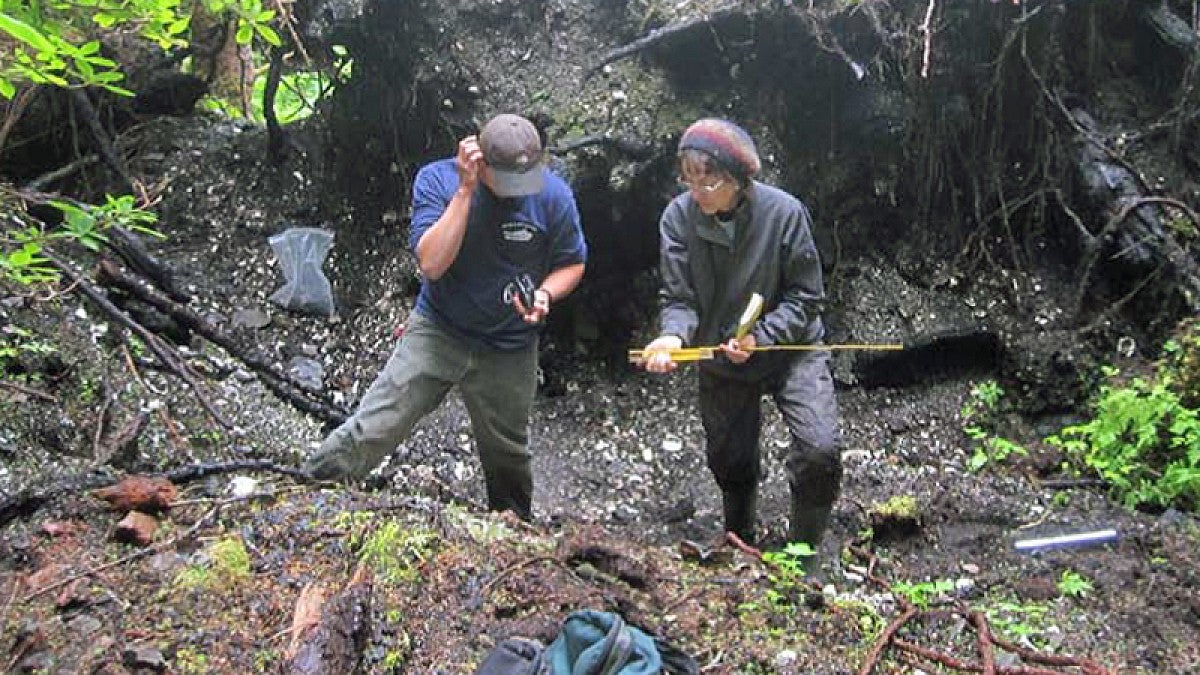If people are what they eat, then their compost piles are the archives of their culture and living environment. Imagine going through 10,000 years of discarded waste to learn about people living in a particular region.
That's essentially what two UO archaeologists did. They combed through scraps of animal bones and other debris gathered over 40 years from 222 ancient village sites and other settlements to forge a big picture of what fisheries looked like long ago along the Pacific Northwest coast of North America.
In the research, Madonna Moss of the University of Oregon and former UO postdoctoral researcher Iain McKechnie constructed the first-ever regionwide map of where certain fish species were found. Their findings are detailed in the Journal of Archaeological Science: Reports.
“Mapping these patterns allows us to synthesize information in ways we couldn't have imagined 10 years ago. New analytical techniques such as map-based visualizations make possible a much broader understanding of the diversity of fishing and fish use,” said Moss, a professor in the UO's Department of Anthropology and curator of zooarchaeology at the Museum of Natural and Cultural History.
The researchers catalogued more than 500,000 fish bones found at the various sites.
“We know a lot more than we think we do about indigenous fishing practices, but our knowledge was scattered across hundreds of individual project reports,” said McKechnie, now an assistant professor at the University of Victoria and an archaeologist at the British Columbia-based Hakai Institute.
“When it comes to archaeology, examining geographic patterns can say a lot about cultural practices over time," he said. "These data offer a new way to consider the cultural similarities and distinctiveness of different indigenous peoples on the coast with respect to fisheries.”
In analyzing the records, the researchers used ubiquity as a measurement, looking for the presence of fish remains at any given site and also widely present elsewhere. The approach, McKechnie said, is like measuring the popularity of a YouTube video by how many countries people watch it in, as opposed to total numbers of views. "Ubiquity doesn’t give a measure of how much of each fish species that people used, but rather, where and how commonly they used it," he said.
As expected, bones from seven salmon species were among the most common fish used on the coast, the researchers documented. Also commonly found were bones from Pacific herring, an oily fish that schools in huge numbers.
Until recently, archaeologists had overlooked herring and many other small fish because their tiny bones had been missed as they slipped through screens then used to sift through materials found at archaeological sites. When smaller mesh sizes became available, archaeologists started finding reams of tiny fish bones.
Halibut and lingcod were also fished thousands of years ago, as they are today, but other species that are often discarded or ignored by present-day fishers show up routinely in archaeological sites. The presence of greenlings, Irish lords, surfperch and smelts in the archaeological sites came as a surprise to the researchers.
“This study affirms importance of both herring and salmon and a host of other species in the diet and economy of indigenous peoples," McKechnie said. "Salmon and herring were cultural keystone species, but people were using a much wider range of species in the past. Many fish missing from today's marine menu clearly served important roles for millennia. Sculpins, plate-sized flatfish, dogfish and rockfish were vitally important for peoples from Oregon up to Alaska.”
The next step in the research is to look closer at where different fish used to live and how abundant they were, so that modern fisheries managers can compare to where these fish species live now.
—By Jim Barlow, University Communications


